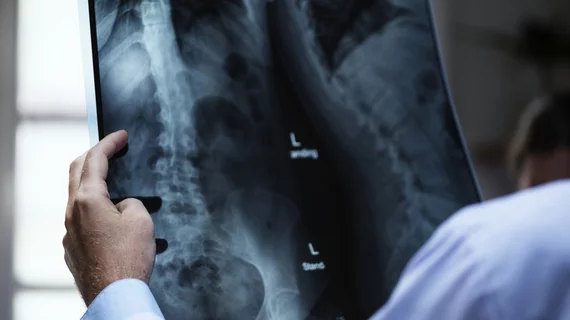X-rays plus software competitive with CT for advanced pelvic imaging
Going by a small study published online March 22 in European Radiology, biplanar digital radiographs of the hip joint reconstructed in 3D as well as 2D are sufficiently comparable on coverage assessments with similarly rendered CT scans to justify the reduction in radiation dose as well as in, presumably, the cost of image acquisition.
Benjamin Fritz, MD, of the University of Zurich and colleagues also compared the modalities when patients stood versus when they lied supine, finding the x-rays could be adequately quantified to visualize the impact of weight bearing on the acetabulum.
The researchers had 50 patients (21 women, 29 men) imaged with anterior and posterior CT and biplanar radiography, both standing and supine.
Using dedicated software to calculate coverages of the region of interest, they found mean anterior 2D coverage was 21.2 percent for x-rays and 23.8 percent for CT. Mean posterior 2D coverage was 54.2 percent for x-rays and 61.7 percent for CT.
Further, mean global 3D coverage was 46.5 percent for x-rays and 45.6 percent for CT.
Additionally, based on the biplanar radiographs, mean anterior and posterior 3D coverages were 20.5 percent and 26.0 percent in weight-bearing position and anterior pelvic plane.
“The inter-method reliability between CT and x-rays and inter-reader reliability for radiograph-based measurements were very good for all measurements,” the authors wrote, adding that 2D and 3D acetabular coverages “can be calculated with very good reliability based on biplanar radiographs.”
Fritz et al. also concluded the impact of standing position on acetabular coverage can be quantified with biplanar x-rays “on an individual basis.”

